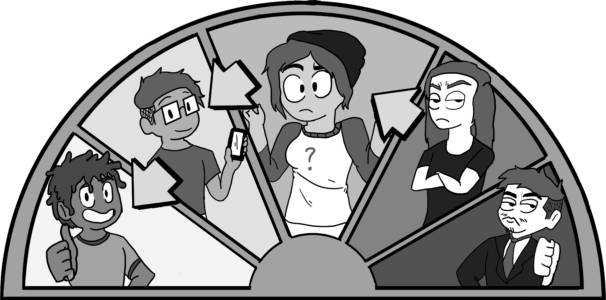Step 1. Explain the concept
In most social-change situations there is a struggle between those who want the change and those who don’t. On the one hand, there are people who are active supporters of the change—not just people who believe in the change but people who are taking actions to make it a reality. On the other hand, there are people who are active opposers, people who actively take actions to prevent the change.
In activist work, we often are focussed on those two groups — yet most people are somewhere between. Societies (towns, provinces, etc.) include a range of groups that can be put on a spectrum from closest to the point of view of your group to farthest away. This spectrum of allies illustrates this point.
The goal of the spectrum of allies is to identify different people—or specific groups of people—in each category, then design actions and tactics to move them one wedge to the left.

Step 2. Explain benefits of this tool
Good news: in most social-change campaigns it is not necessary to win over the opponent to your point of view. It is only necessary to move the central pie wedges one step in your direction.
This is important. If we shift each wedge one step, we are likely to win, even if the hardliners on the other side never move. That means our goal is not to convince the fossil fuel industry to end themselves. Instead, it is moving the rest of the society to shut them down.
Often activists have the mistaken idea that they need to win everyone to their side (which invites despair), or that we need to change the fossil fuel industry or other people actively fighting against the campaign (again inviting despair). When organisers bring an optimistic attitude, instead of one of despair, to the task of mobilisation, it is a lot easier to get people on board.
The Spectrum of Allies also reminds us there is a need for many roles. Different actions will reach folks at different places in the spectrum, so there are many ways to support a campaign, from lobbying politicians to marching in the streets.
This tool also evaluates our work. Can we show that we are measurably moving some segment of people over to our side? If not, we need to rethink our strategy.
Step 3. Fill out the chart
This tool is even useful for small groups. Take some time to fill out the chart with specific people and groups. Note that you need to be specific to make this tool work. “The public,” for example, is far too broad to reach, and your strategy will suffer as a result. Instead, identify specific groups—groups that have a phone number, or an address –– a group you could attend a meeting of, or meet with a leader. Think of specific individuals, both politically influential, but also socially influential, like elders and community leaders. (Read more about power-mapping.)
Step 4. Review learnings and lessons
Share reflections and lessons in the whole group. The group may realise it needs to do more research. Or it may have important, interesting debates about where people are on the spectrum.
Other lessons include:
- It is a huge win if you can get a group that was slightly hostile to move into neutrality.
- It is a huge win if you can get the group/wedge next to your end of the spectrum to move into activism.
- It is usually not necessary to move the opponents a step toward you in order to win, although it can make the win happen faster.
- This tool can identify areas of research by showing where you need to know more.
- It can show the importance of mapping out a range of people: those who are directly impacted by the situation, people who think of themselves as your allies, and people who are “powerholders” (government officials, etc). All of those people may be spread out across the spectrum so it is important to notice their range and how some of them may help you focus your efforts and support different aspects of your organising.
Notice which slices your group knows a lot, or a little, about. This shows which groups you should try to meet with in order to know more about that wedge of the spectrum of allies. Create a plan to reach out to them.
For example, Jordanian activists fighting for an expansion of public transportation realised they wanted to involve people who rode buses, but didn’t know them. So they hung out at bus stops and rode the bus to initiate one-on-ones with hundreds of people, to hear their opinion and insights. (Read more about their campaign here.)